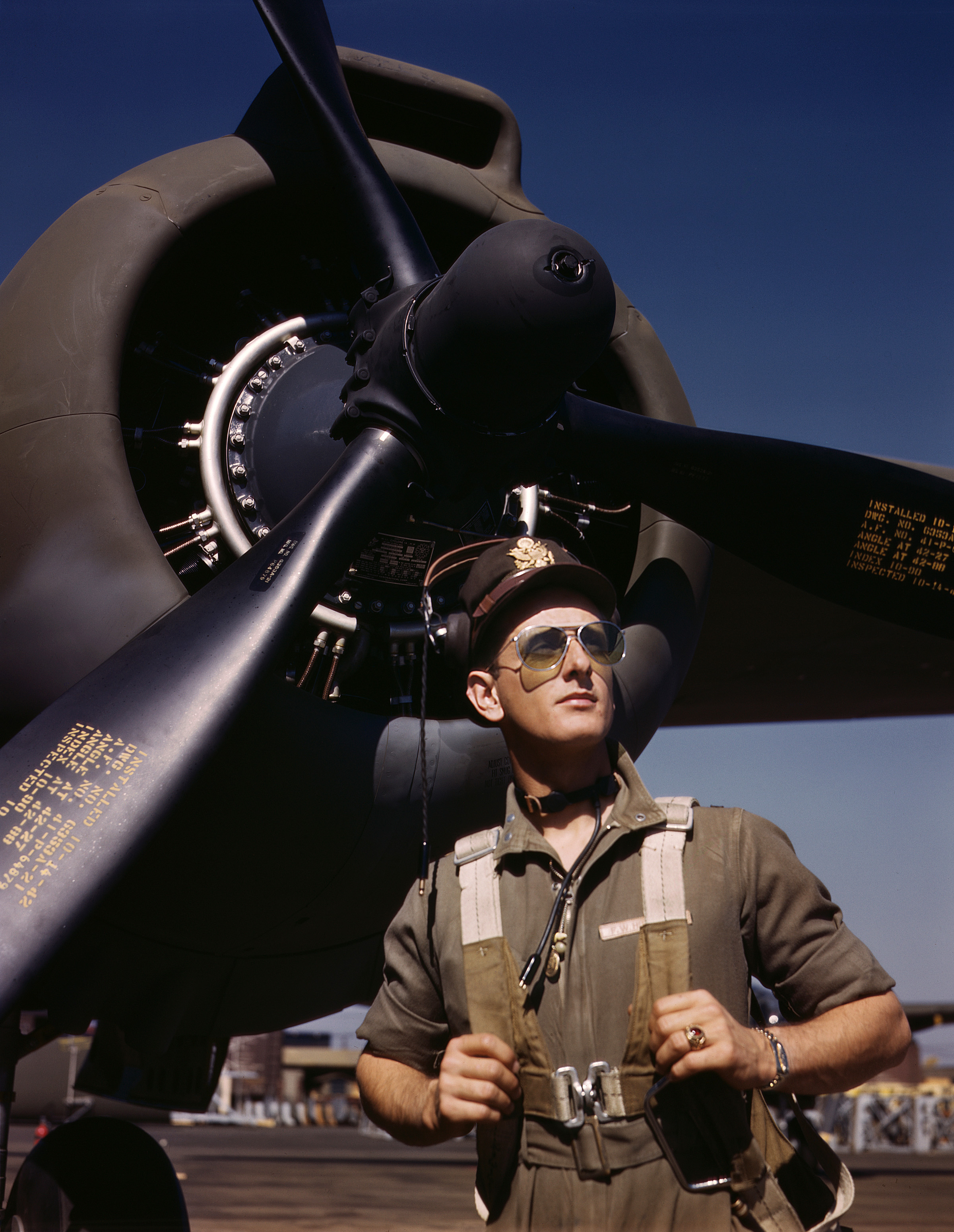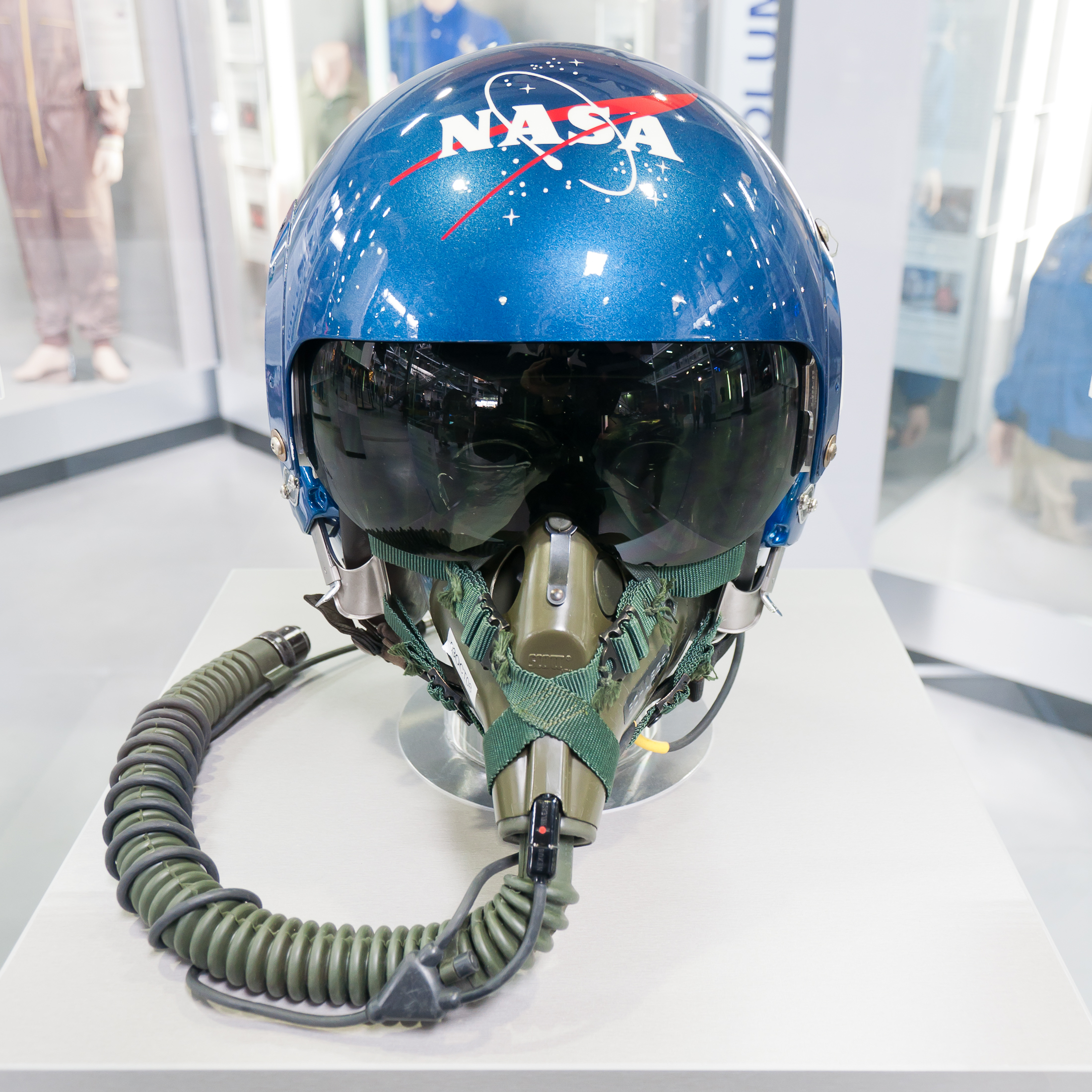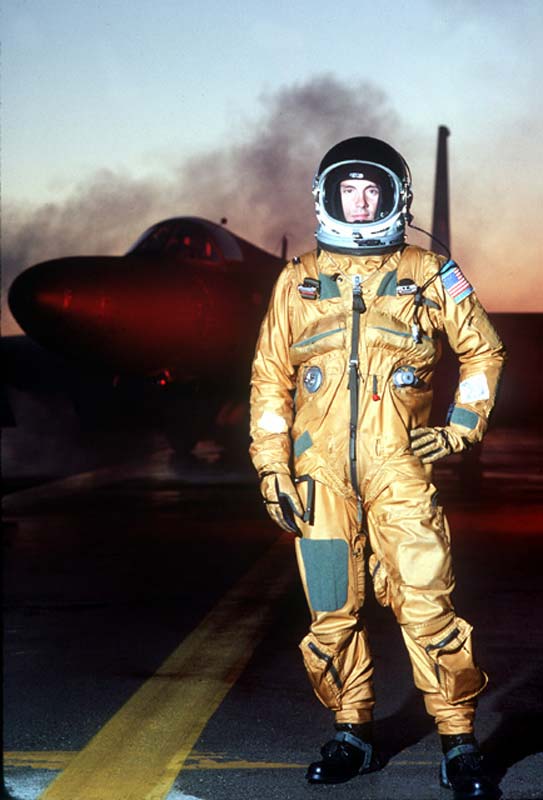|
Oxygen Mask
An oxygen mask is a mask that provides a method to transfer breathing gas, breathing oxygen gas from a storage tank to the lungs. Oxygen masks may cover only the nose and mouth (oral nasal mask) or the entire face (full-face mask). They may be made of plastic, silicone, or rubber. In certain circumstances, oxygen may be delivered via a nasal cannula instead of a mask. Medical plastic oxygen masks Examples of medical plastic oxygen masks Medical plastic oxygen masks are used primarily by medical care providers for oxygen therapy because they are disposable and so reduce cleaning costs and infection risks. Mask design can determine accuracy of oxygen delivered with many various medical situations requiring treatment with oxygen. Oxygen is naturally occurring in room air at 21% and higher percentages are often essential in medical treatment. Oxygen in these higher percentages is classified as a drug with too much oxygen being potentially harmful to a patient's health, resulting ... [...More Info...] [...Related Items...] OR: [Wikipedia] [Google] [Baidu] |
Simple Face Mask
The simple face mask (SFM) is a basic disposable mask, made of clear plastic, to provide oxygen therapy for patients who are experiencing conditions such as chest pain (possible heart attacks), dizziness, and minor hemorrhages. This mask is only meant for patients who are able to breathe on their own, but who may require a higher oxygen concentration than the 21% concentration found in ambient air. Patients who are unable to breathe on their own are placed on a medical ventilator instead. The simple face mask can deliver higher flow rates than nasal cannula (6–10 liters per minute) for an Fraction of inspired oxygen, FiO2 of 30- 60% oxygen. Nasal cannula and simple face masks are described as low flow delivery systems. Unlike the non-rebreather and partial rebreather masks, the simple face mask lacks a reservoir bag. It also has holes in the mask instead of the non-rebreather's one-way valves, so ambient air can enter the mask. This feature eliminates the danger of suffocatio ... [...More Info...] [...Related Items...] OR: [Wikipedia] [Google] [Baidu] |
Hypoxia (medical)
Hypoxia is a condition in which the body or a region of the body is deprived of an adequate oxygen supply at the tissue (biology), tissue level. Hypoxia may be classified as either ''Generalized hypoxia, generalized'', affecting the whole body, or ''local'', affecting a region of the body. Although hypoxia is often a pathological condition, variations in arterial oxygen concentrations can be part of the normal physiology, for example, during strenuous physical exercise. Hypoxia differs from hypoxemia and anoxemia, in that hypoxia refers to a state in which oxygen present in a tissue or the whole body is insufficient, whereas hypoxemia and anoxemia refer specifically to states that have low or no Oxygen saturation (medicine), oxygen in the blood. Hypoxia in which there is complete absence of oxygen supply is referred to as anoxia. Hypoxia can be due to external causes, when the breathing gas is hypoxic, or internal causes, such as reduced effectiveness of gas transfer in the lung ... [...More Info...] [...Related Items...] OR: [Wikipedia] [Google] [Baidu] |
Cabin Pressurization
Cabin pressurization is a process in which conditioned air is pumped into the aircraft cabin, cabin of an aircraft or spacecraft in order to create a safe and comfortable environment for humans flying at high altitudes. For aircraft, this air is usually Bleed air, bled off from the gas turbine, gas turbine engines at the compressor stage, and for spacecraft, it is carried in high-pressure, often liquid oxygen, cryogenic, tanks. The air is cooled, humidified, and mixed with recirculated air by one or more Environmental control system (aircraft), environmental control systems before it is distributed to the cabin. The first experimental pressurization systems saw use during the 1920s and 1930s. In the 1940s, Boeing 307 Stratoliner, the first commercial aircraft with a pressurized cabin entered service. The practice would become widespread a decade later, particularly with the introduction of the British de Havilland Comet jetliner in 1949. However, South African Airways Flight 201 ... [...More Info...] [...Related Items...] OR: [Wikipedia] [Google] [Baidu] |
Commercial Aircraft
An airliner is a type of airplane for transporting passengers and air cargo. Such aircraft are most often operated by airlines. The modern and most common variant of the airliner is a long, tube shaped, and jet powered aircraft. The largest of them are wide-body jets which are also called twin-aisle because they generally have two separate aisles running from the front to the back of the passenger cabin. These are usually used for long-haul flights between airline hubs and major cities. A smaller, more common class of airliners is the narrow-body or single-aisle. These are generally used for short to medium-distance flights with fewer passengers than their wide-body counterparts. Regional airliners typically seat fewer than 100 passengers and may be powered by turbofans or turboprops. These airliners are the non- mainline counterparts to the larger aircraft operated by the major carriers, legacy carriers, and flag carriers, and are used to feed traffic into the large airline ... [...More Info...] [...Related Items...] OR: [Wikipedia] [Google] [Baidu] |
Passenger Oxygen Mask Dsc06035
A passenger is a person who travels in a vehicle, but does not bear any responsibility for the tasks required for that vehicle to arrive at its destination or otherwise operate the vehicle, and is not a steward. The vehicles may be bicycles, buses, cars, passenger trains, airliners, ships, ferryboats, personal watercraft, all terrain vehicles, snowmobiles, and other methods of transportation. Crew members (if any), as well as the driver or pilot of the vehicle, are usually not considered to be passengers. For example, a flight attendant on an airline would not be considered a passenger while on duty and the same with those working in the kitchen or restaurant on board a ship as well as cleaning staff, but an employee riding in a company car being driven by another person would be considered a passenger, even if the car was being driven on company business. Legal status In most jurisdictions, laws have been enacted that dictate the legal obligations of the owner of a v ... [...More Info...] [...Related Items...] OR: [Wikipedia] [Google] [Baidu] |
Altitude Chamber
A hypobaric chamber, or altitude chamber, is a chamber used during aerospace or high terrestrial altitude research or training to simulate the effects of high altitude on the human body, especially hypoxia (low oxygen) and hypobaria (low ambient air pressure). Some chambers also control for temperature and relative humidity. Procedure One or more subjects (usually, pilots or crew members, though anyone interested in the effects of high altitude can usually arrange a visit) are placed in the chamber. Before "ascending" to the desired altitude, subjects breathe oxygen from oxygen masks to purge nitrogen from their bloodstream so decompression sickness (DCS) does not occur. With masks in place, the atmospheric pressure inside the chamber is then reduced to simulate altitudes of up to tens of thousands of feet. The subjects then remove their oxygen masks and experience the symptoms of hypoxia. An inside safety observer, breathing oxygen by mask, should always be present to pla ... [...More Info...] [...Related Items...] OR: [Wikipedia] [Google] [Baidu] |
Aviators
An aircraft pilot or aviator is a person who controls the flight of an aircraft by operating its directional flight controls. Some other aircrew members, such as navigators or flight engineers, are also considered aviators because they are involved in operating the aircraft's navigation and engine systems. Other aircrew members, such as drone operators, flight attendants, mechanics and ground crew, are not classified as aviators. In recognition of the pilots' qualifications and responsibilities, most militaries and many airlines worldwide award aviator badges to their pilots. Definition The first recorded use of the term ''aviator'' (''aviateur'' in French) was in 1887, as a variation of ''aviation'', from the Latin ''avis'' (meaning ''bird''), coined in 1863 by in ''Aviation Ou Navigation Aérienne'' ("Aviation or Air Navigation"). The term ''aviatrix'' (''aviatrice'' in French), now archaic, was formerly used for a female pilot. The term ''aviator'' (''aviateur'' in F ... [...More Info...] [...Related Items...] OR: [Wikipedia] [Google] [Baidu] |
Flight Helmet
A flight helmet, sometimes referred to as a "skull dome", "bone dome" or "foam dome", is a special type of helmet primarily worn by military aircrew. A flight helmet can provide:Aerospace International (magazine), March 2011, pages 26–29 * Impact protection to reduce the risk of head injury (e.g. in the event of a parachute landing) and protection from wind blast (e.g. in the event of Ejection seat, ejection). * A visor to shield the eyes from sunlight, flash, supersonic wind blasts and laser beams. * Noise attenuation, headphones and a microphone (except when included in a mask). * A helmet mounted display, mounting for night vision goggles and/or a helmet tracking system (so the aircraft knows where the pilot is looking). The design of a flight helmet may also consider: * Comfort – including the weight, centre of gravity and provision for cooling and ventilation. * Compatibility with an Oxygen mask#Oxygen masks for aviators, oxygen mask (for high-altitude flight and NBC su ... [...More Info...] [...Related Items...] OR: [Wikipedia] [Google] [Baidu] |
Pressure Suit
A pressure suit is a protective suit worn by high-altitude pilots who may fly at altitudes where the air pressure is too low for an unprotected person to survive, even when breathing pure oxygen at positive pressure. Such suits may be either full-pressure (e.g., a space suit) or partial-pressure (as used by aircrew). Partial-pressure suits work by providing mechanical counter-pressure to assist breathing at altitude. Background The region from sea level to around is known as the physiological-efficient zone. Oxygen levels are usually high enough for humans to function without supplemental oxygen and decompression sickness is rare. The physiological-deficient zone extends from to about . There is an increased risk of problems such as Hypoxia (medical), hypoxia, trapped-gas dysbarism (where gas trapped in the body expands), and evolved-gas dysbarism (where dissolved gases such as nitrogen may form in the tissues, i.e. decompression sickness). Above approximately oxygen-rich Br ... [...More Info...] [...Related Items...] OR: [Wikipedia] [Google] [Baidu] |
Parachute
A parachute is a device designed to slow an object's descent through an atmosphere by creating Drag (physics), drag or aerodynamic Lift (force), lift. It is primarily used to safely support people exiting aircraft at height, but also serves various purposes like slowing cargo, aiding in space capsule recovery, and stabilizing vehicles or objects. Modern parachutes are typically made from durable fabrics like nylon and come in various shapes, such as dome-shaped, rectangular, and inverted domes, depending on their specific function. The concept of the parachute dates back to ancient attempts at flight. In 852 AD, Armen Firman, in Córdoba, Spain, made the first recorded jump with a large cloak to slow his fall. Renaissance figures like Francesco di Giorgio Martini and Leonardo da Vinci later sketched designs resembling modern parachutes, but it wasn’t until the 18th century that the first successful jumps occurred. French Louis-Sébastien Lenormand made the first public jump i ... [...More Info...] [...Related Items...] OR: [Wikipedia] [Google] [Baidu] |
Ejection Seat
In aircraft, an ejection seat or ejector seat is a system designed to rescue the aircraft pilot, pilot or other aircrew, crew of an aircraft (usually military) in an emergency. In most designs, the seat is propelled out of the aircraft by an explosive charge or rocket motor, carrying the pilot with it. The concept of an ejectable escape crew capsule has also been tried (see B-58 Hustler). Once clear of the aircraft, the ejection seat deploys a parachute. Ejection seats are common on certain types of military aircraft. History A bungee cord, bungee-assisted escape from an aircraft took place in 1910. In 1916, Everard Calthrop, an early inventor of parachutes, patented an ejector seat using compressed air. Compression springs installed under the seat were tested. The modern layout for an ejection seat was first introduced by Romanian inventor Anastase Dragomir in the late 1920s. The design featured a ''parachuted cell'' (a dischargeable chair from an aircraft or other vehicle) ... [...More Info...] [...Related Items...] OR: [Wikipedia] [Google] [Baidu] |







